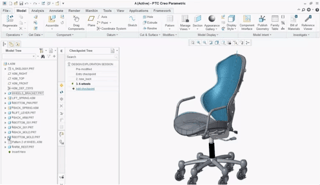 Having to work with non-native CAD files can be a frustrating process, and what makes it worse is having a project deadline around the corner. You have CAD data that you need to work with but it was created in a different CAD tool to the one you use in your organisation. But don’t beat yourself up about it, there are solutions out there to help with the problem. A recent PTC survey discovered that:
Having to work with non-native CAD files can be a frustrating process, and what makes it worse is having a project deadline around the corner. You have CAD data that you need to work with but it was created in a different CAD tool to the one you use in your organisation. But don’t beat yourself up about it, there are solutions out there to help with the problem. A recent PTC survey discovered that: - Nearly half of people utilising CAD systems found it difficult to import models from other 3D CAD systems
- And a further 10% found it difficult to modefiy these models once they were in the CAD systems.
#1 Design teams are empowered
There are huge benefits for your engineering teams, enabling them to work on multi-CAD projects with all the latest design information. This means you can avoid errors, which are both costly and time-consuming.
#2 Non-native files are easily assembled
In Creo, non-native files which can be easily assembled and referenced to other geometry. They can be put into the context of the entireassembly and then you can establish the intelligence in the imported geometry.
#3 Creo assists with pattern recognition
By selecting a piece of the pattern, Creo can find and establish the design intent. Once thispattern has been recognised, you can use it to assemble imported or native componentsmultiple times. This process can be completed quickly for parts, such as bolts and screws.
#4 Create new geometry within the multi-CAD assembly
Creo helps you work with native and non-native files through some of it’s in-built features.For instance, you can quickly create new geometry within the context of the multi-CADassembly by referencing various design details and features. So if you want to use anexisting 2D profile, you can further define this geometry with Creo.
#5 ATB technology reapplies design intent
To keep your design up-to-date, you can use Associative Topology Bus (ATB) technology tomaintain the association with the original non-native file. When an update is received, the ATB technology propagates the change and reapplies the design intent. This helps youvisualise all components within the multi-CAD assembly, establish relationships betweennative and non-native components, and integrate updates to non-native files. All of this means you can collaborate more effectively with suppliers and partners who areusing different CAD systems. Not only does this eliminate errors, it also avoids timely re-works. Therefore, investing in multi-CAD data is well worth your time because it’ll save youtime in the long-term, shortening your overall design cycle.
